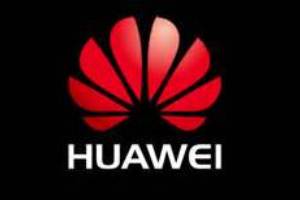The US, Singapore and Sweden lead the way in digitising their economies. So says Huawei’s newly released 2016 Global Connectivity Index (GCI).
However, as Jeremy Cowan reported from Shenzhen, there have been global improvements — and a few declines — in national levels of economic digitisation. The greatest improvements worldwide have been seen in broadband coverage and speed, but countries are also making real headway with supply, demand, and user experience in the Internet of Things (IoT), cloud, and big data technologies.
Now in its third year, the report measures the progress of 50 nations investing in and deploying Information and Communications Technology (ICT) to digitise their economies.
GCI 2016, entitled Connect where it counts, measures 40 indicators covering the supply, demand, experience, and potential of five technology enablers: broadband, data centres, cloud, big data, and IoT. Investing in these five technologies enables nations to digitise their economies.
The report shows that average national connectivity levels are 5% higher than in 2015. Twelve countries improved their positions, while four experienced a drop. The top three developed economies are the United States, Singapore, and Sweden. The leading developing economies are the United Arab Emirates (UAE) in 19th place, Qatar in 21st, and China in 23rd.
Examples of countries that moved up the index include the UK in 5th, rising one place from last year; Malaysia, which jumped four places to 25th; and Indonesia, which moved up two places to 41st. Malaysia and Indonesia’s gains may be attributable to broadband rollout, which in turn influences data centre development. These two basic technologies lay the foundation for the three advanced technology enablers; Cloud, big data, and IoT.
On the down side, Venezuela dropped seven places, Egypt two, and Kenya and Romania one place each. All have fallen behind in fixed and mobile broadband coverage and affordability. Venezuela is experiencing an economic crisis, with drastic spending and investment cuts caused by declining oil prices and political unrest. Similarly, conflict has plunged Egypt into a recession, slashing the nation’s revenues from oil and tourism. Kenya and Romania have not invested as much as their peers in expanding communications networks, which has negatively affected demand.

“Without a solid foundation of high speed broadband,” said Huawei, “it’s hard to adopt other technology enablers like cloud services, big data, and IoT. Every nation is doing its best to outpace others by developing ICT capabilities in the five technology enablers and thus boost competitiveness, productivity, and GDP growth. Each nation needs to benchmark its progress to ensure growth is fast enough, because slow growth or staying at the same level means falling behind in real terms.”
GCI scores continue to show a positive correlation with gross domestic product (GDP), similar to last year’s findings. However, the extent to which GCI influences GDP varies with the stage of digital transformation in each country.
GCI 2016 identifies three groups of countries: Starters are beginning their digital journey and score between 20 and 34. At the moment, their digital infrastructure is not developed enough to strongly influence GDP. Adopters are those states in the middle range have a stronger digital infrastructure and score between 35 and 55.
They experience the greatest GDP gains per GCI point increase. And the Frontrunners show the greatest digital development with scores above 55, although GDP gains per GCI point are slightly less than Adopters. However, Frontrunners show more mature cloud, big data, and IoT, in readiness for more extensive economic digitisation.
GCI 2016 finds that investing in digital infrastructure correlates to GDP gains because it increases economic dynamism, efficiency, and productivity. To drive further GDP gains, countries need to move up the technology stack by investing in new technologies and ensuring they are adopted by governments, industry, and people.
According to the report, countries with high GCI scores are also more competitive and innovative. They reportedly show a close correlation between GCI scores and ratings in the WEF Global Competitiveness Index and the Global Innovation Index, jointly published by Cornell University, INSEAD, and the UN’s World Intellectual Property Organisation.
Commented on the survey results, Kevin Zhang, president of Huawei Corporate Marketing, says, “A revolutionary shift is occurring in the way the world works, with economies across the planet going digital fast. Nations that are in the early stages of economic digitisation should develop long-term technology plans that include broadband and data centres to reap the benefits of enhanced growth. Developed economies wanting to capitalise on their frontrunner ICT status should invest more in cloud, big data, and IoT technologies and solutions to experience the full benefits of a digital economy.”
The 50 countries assessed by GCI 2016 account for 90% of global GDP and 78% of the world’s population.
Comment on this article below or via Twitter: @IoTNow_ OR @jcIoTnow










